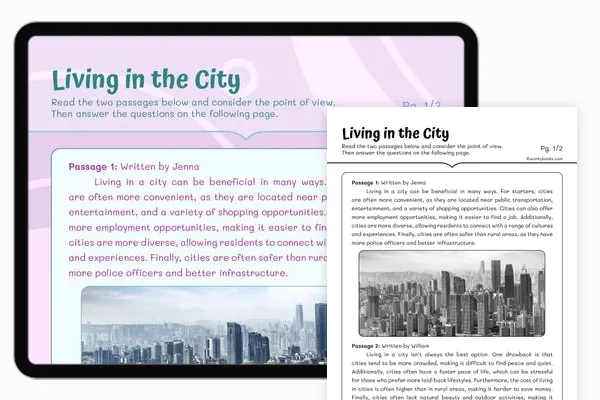The Wright Brothers' First Flight — Reading Comprehension
Grades
- 4
- 5
Standards
- RI.4.6
- RI.5.6
PRINT+DIGITAL RESOURCE
This learning resource is available in interactive and printable formats. The interactive worksheet can be played online and assigned to students. The Printable PDF version can be downloaded and printed for completion by hand.
About This Reader
This passage presents two perspectives on the Wright Brothers' first flight: Orville Wright's firsthand journal entry and a secondhand account from Scientific American. The journal entry captures the excitement and personal significance of the moment, describing the sensory experiences and immediate reactions. The magazine article, however, provides a more technical overview, including specific flight measurements and the broader context of aviation history. This comparison allows students to analyze how firsthand and secondhand accounts differ in focus, detail, and tone, aligning with CCSS.ELA-LITERACY.RI.4.6 standards and enhancing their understanding of historical events and informational text structures.
Perfect For:
👩🏫 Teachers
- • Reading comprehension practice
- • Auto-graded assessments
- • Literacy skill development
👨👩👧👦 Parents
- • Reading practice at home
- • Comprehension improvement
- • Educational reading time
🏠 Homeschoolers
- • Reading curriculum support
- • Independent reading practice
- • Progress monitoring
Reading Features:
📖
Reading Passage
Engaging fiction or nonfiction text
❓
Comprehension Quiz
Auto-graded questions
📊
Instant Feedback
Immediate results and scoring
📄
Printable Version
Download for offline reading
🔊
Read Aloud
Voice-over with word highlighting













